Showing 229–240 of 1182 results
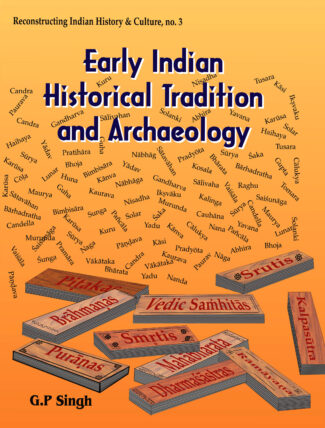
Surveying the whole extent of Itihasa-Purana and sifting facts from myths, the book reconstructs millennia of ancient Indias political-cultural history (pre-Bharata war days to about ad 1200), with chronological details of all kingdoms that ruled.
In mankinds history, Indias is the longest literary tradition so ancient that it cannot be illustrated either by con- temporary books or from monuments. The Rigveda, indisputably the oldest literary work, was written at a time when many a great, old-world civilization lay in the wombs of futurity. And almost equal is the antiquity of the Puranas which, considered as the fifth Veda, figure distinguishedly among the traditional sources: Vedic Samhitas, Brahmanas, Srutis and Smritis, Dharmashastras, epics (the Ramayana and the Mahabharata), tantra manuals, and myriad Buddhist and Jaina texts, that have helped historiographers unravel the landmarks in the subcontinental civilization. Bulky and often crowded with legendary, religious and philosophical matters of various kinds, the PURANAS record the genealogies of Hindu deities, the reigns of the Manus, and chronicles of Solar, Lunar and other ancient dynasties. Professor G.P. Singh tries afresh to establish their historicity, surveying the whole extent of Itihasa-Purana: the early Indian historical tradition, founded on the Puranic literature. Meticulously sifting facts from myths, legends, and philosophic reflections in this monumental corpus of yore, the book reconstructs millennia of ancient Indias political and cultural history: from the pre-Bhrata War days to about 1200 ad (the post-Harsha period) with both genealogical and chronological details of all dynasties/ kingdoms that rose and fell in different regions of the Indian subcontinent. Contextually, the author analyses threadbare the Puranic evidence to also review the date of the Mahabharata War. In thematically exploring the historicity of all different Puranas, Dr. Singh is at pains to show how far the Puranic accounts are validated by other traditional writings on the one hand, and archaeological evidence on the other. With prolific bibliographic references and a number of chronological genealogical tables, his book will interest the scholars/ researchers of Indology, ancient Indian history and archaeology.

This work attempts to show that the coastlands were cultural melting pots, mediating, absorbing and often transcending the art of the interiors, i.e. the classical schools of Indian sculptural art at Mathura, Gandhara and Sarnath. The discussions in the nine chapters cover a broad range of sculptural art created in the Indian littoral regions between 300 bce and ce 500.
Scholars of early Indian art traditions have mostly viewed the coastlands as being marginal to the cultural efflorescences that happened in the interiors of the subcontinent. The classical schools of Indian sculptural art which blossomed at Mathura, Gandhara and Sarnath in the first half of the first millennium ce, have become axioms in the study of early Indian sculptural art. No discussion on early sculptural art can be complete without allusion to one or other of the schools. This work attempts to show that the coastlands, while influenced by the great schools of art, were nevertheless cultural melting pots in their own right, often transcending the art of the interiors. As staging areas of long distance maritime exchanges, the Indian coastlands have long mediated between the far civilizations of the Indian Ocean world (Egyptian, Arabian, Persian, East African and Southeast Asian) and the Indic cultural sphere. The coastlands are viewed as cross-cultural realms, places most conducive for absorption of new ideas and for syncretic manifestations. The discussions in the nine chapters cover a broad range of sculptural art created in the Indian littoral regions between 300 bce and ce 500. These include friezes in the rock cut caves of the Western and Eastern Ghats, decorated pillar capitals and free standing creations in stone and terracotta. Many of the observations are based on the author’s fieldwork on the Indian coastlands. Cover photo: Yakua image of stone inside a sacred grove in Haigunda Island, Uttar Kannada Dist., Karnataka, 4th century ce.
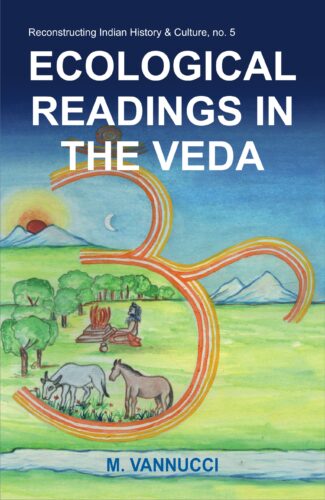
Dr. Vannucci, exploring the ecological validity of the Vedas, interprets the Vedic verses to decipher the ancient code with a bio-ecological key. She makes a comparative study of Vedic ecology and its contemporary world-view.
The Vedas are indisputably among the oldest of mankinds documents. Which Dr. Marta Vannucci rummages through to address a highly enigmatic question: How man evolved as Man: thinking, discriminating, thought-communicating? Or, yet more specifically, how did he come to identify cause-effect relationships of living-beings: both among themselves and with their environment? In looking for answers, she discovers profound biological, physiological, and ecological insights in Vedic writings which she projects here, with coherent analyses and prolific textual references. Dr Vannucci, who has studied Indian sacred texts for about twenty years, is perhaps the first ever biologist to explore the ecological validity of Vedas. With her critical Florentine mind and five-decade-long involvement in scientific methodologies, she interprets the complex Vedic verses in her thematic effort to decipher the ancient code with a bio-ecological key -spelling out, contextually, the Matter-Energy principles (embodied in Lord Agni) and Life-Hope principles (personified by Lord Savitr). Also setting out a comparative perspective on Vedic expressions of ecology and its contemporary worldview, the author suggests that the essential difference between the two stems not from the perception of reality, but from the manner of their theorizing. It is a painstakingly documented work, with a large-scale glossary of Sanskrit/ technical words and extensive bibliographic references. And also a foreword by a cultural scholar of Dr Kapila Vatsyayans eminence.
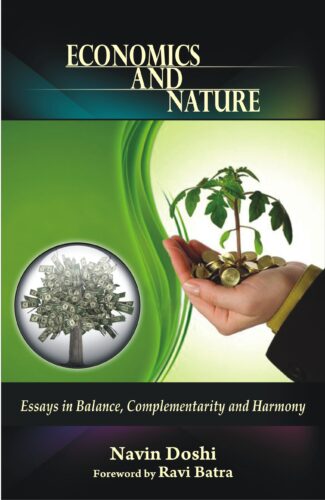
ßEconomics and Natureû is a versatile attempt at analysing the present-day global economic scenario in the backdrop of time-tested economic theories and ancient thought. While focusing on issues that have resulted in economic quagmire, the book attempts to provide veritable solutions.
The book, adopting a fresh approach, addresses the economic travails in the contemporary global scenario and presents a search for solutions to the economic quagmire based on arguments relying on common sense and understanding of human nature. It analyses the views of thinkers and economists including Kautilya of the ancient India, ideas of John Maynard Keynes and Milton Friedman, and other highly acclaimed economic theories to discuss ideal economic concepts. Looking at the past for economic wisdom and taking clue from the laws of nature which ensures that imbalances do not persist for long, the articles in the volume deal with matters of deep concern in the present-day global economic scenario and ways to address them. The volume, informative, interesting and insightful, is bound to be useful to economists as well as general readers.

ßEconomics and Natureû is a versatile attempt at analysing the present-day global economic scenario in the backdrop of time-tested economic theories and ancient thought. While focusing on issues that have resulted in economic quagmire, the book attempts to provide veritable solutions.
The book, adopting a fresh approach, addresses the economic travails in the contemporary global scenario and presents a search for solutions to the economic quagmire based on arguments relying on common sense and understanding of human nature. It analyses the views of thinkers and economists including Kautilya of the ancient India, ideas of John Maynard Keynes and Milton Friedman, and other highly acclaimed economic theories to discuss ideal economic concepts. Looking at the past for economic wisdom and taking clue from the laws of nature which ensures that imbalances do not persist for long, the articles in the volume deal with matters of deep concern in the present-day global economic scenario and ways to address them. The volume, informative, interesting and insightful, is bound to be useful to economists as well as general readers.
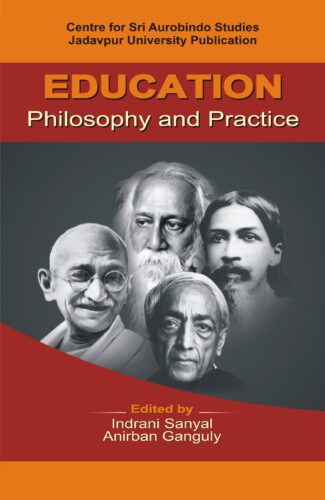
The book elaborates and analyses various strands of Sri Aurobindo’s thoughts on education. It also explores classical Indian model for education, with the viewpoints of some of his distinguished contemporaries like Rabindranath Tagore, Mahatma Gandhi, J. Krishnamurti and others.
The anthology Education: Philosophy and Practice, an academic initiative of the Centre for Sri Aurobindo Studies, Jadavpur University, elaborates and analyses various strands of Sri Aurobindo’s thoughts on education. Sri Aurobindo divorced from history (especially from the very political atmosphere of the period, when it was a colonial India) is difficult to situate. The present study, keeping Sri Aurobindo’s ideas on education central to it, also explores classical Indian model of education, the Bengal National model for education and also explores viewpoints of some of his distinguished contemporaries like Rabindranath Tagore, Mahatma Gandhi, Jiddu Krishnamurti, Sister Nivedita, Ananda Coomaraswamy and others. Sri Aurobindo, as a practical guide, as an acarya in the typical classical Upanisadic model, had far-reaching influences upon his disciples. This volume is an eye-opener for the subject on professional ethics for teachers and on the inter-personal relation between the teacher and student. The present volume consists of twelve essays which are analytic, informative and is lucid in style. This is a well-rounded text for students and an essential reference for researchers. This volume is surely helpful in the domain of Sri Aurobindo Studies.
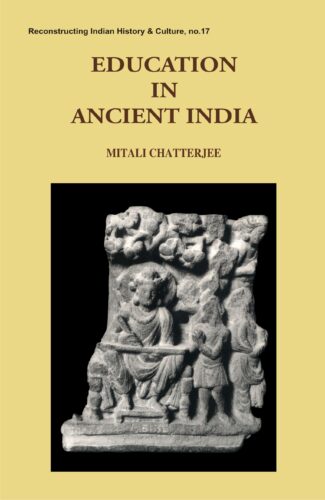
The book is an in-depth study of the socio-cultural life of the Mising tribe of Assam. It studies the factors influencing their material culture, traditional life pattern, art and craft activity et al. and tries to analyze the impact of modernisation, acculturation and urbanization faced by them.
Mitali Chatterjees study of education in ancient India focusses chiefly on over two hundred years: ad 319-550, of the reign of Imperial Guptas, which has been variantly described as the Golden Age, Periclean Age, or even the Age of Hindu Renaissance. It was a time when literature, arts, and sciences flourished in a degree beyond the ordinary. These achievements are inconceivable without a well-evolved system of education. With its theme like education, covering such a large period of time the book traverses a terrain so far little charted. It is indisputably a work of painstaking research trying, as it does, to retrieve educational set-up of classical India from an astonishing mass of contemporary sources, including notably (a) Puranas like Markandeya, Matsya, Vayu, Vishnu, and Vishnudharmottara; (b) Smriti texts like Vyasa-smriti, Harita-samhita, and Pitamaha-smriti; (c) Literary classics of Kalidasa, Vishakhadatta, Kumaradasa and others; (d) Jaina and Buddhist works of scholars like Vasubandhu and Dinnaga; (e) Astronomical/scientific treatises of Aryabhata and others; (f) Foreign travellers narratives; and (g) Other miscellaneous writings on grammar, linguistics and polity besides inscriptional and numismatic material. Notwithstanding the ethical-cum-religious overtones of ancient Indian education, the pathashalas (schools) and universities taught Sanskrit, literature, arts, sciences, philosophy, laws, and even rituals. In conclusion, the author demonstrates how the educational system of the Imperial Guptas, in certain ways, anticipated some of the fundamental theories given by great modern educationists. A useful work for anyone involved with education; whether as a historian, a professional or a scholar.
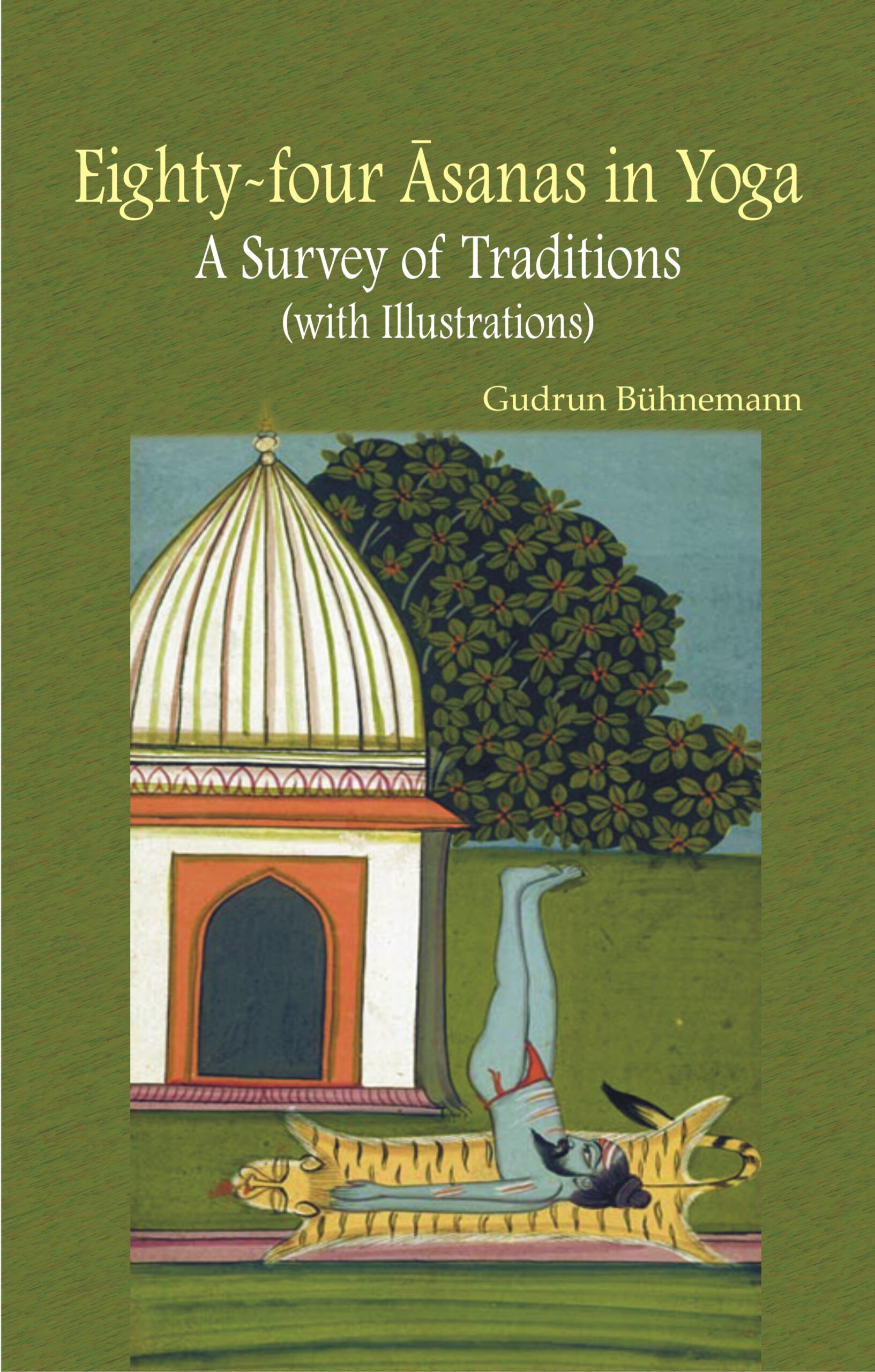
Physical postures (asanas) are the most important and often the only constituent of modern Yoga. Many practitioners believe that the postures derive from an ancient original set of eighty-four asanas. This book, for the first time, traces traditions of eighty-four postures by examining original materials, including drawings, descriptions in older Indic texts and modern publications which reflect contemporary traditions. It also takes up a number of broad issues related to the topic of Yoga postures so as to provide the reader with a larger context.
Physical postures (àsanas) are the most important and often the only constituent of modern Yoga. Many practitioners believe that the postures derive from an ancient original set of eighty-four àsanas. This book, for the first time, traces traditions of eighty-four postures by examining original materials, including drawings, descriptions in older Indic texts and modern publications which reflect contemporary traditions. It also takes up a number of broad issues related to the topic of Yoga postures so as to provide the reader with a larger context.

Physical postures (asanas) are the most important and often the only constituent of modern Yoga. Many practitioners believe that the postures derive from an ancient original set of eighty-four asanas. This book, for the first time, traces traditions of eighty-four postures by examining original materials, including drawings, descriptions in older Indic texts and modern publications which reflect contemporary traditions. It also takes up a number of broad issues related to the topic of Yoga postures so as to provide the reader with a larger context.
Physical postures (àsanas) are the most important and often the only constituent of modern Yoga. Many practitioners believe that the postures derive from an ancient original set of eighty-four àsanas. This book, for the first time, traces traditions of eighty-four postures by examining original materials, including drawings, descriptions in older Indic texts and modern publications which reflect contemporary traditions. It also takes up a number of broad issues related to the topic of Yoga postures so as to provide the reader with a larger context.

This is a unique handbook for inhouse training courses in electrical industries, power generation, transmission, etc. The book has special thrust on energy conservation, pollution control and space saving in consonance with the latest global requirements.
SOME UNIQUE FEATURES
Special thrust on energy conservation, pollution control and space saving in consonance with the latest global requirements.
Special coverage on earthquake engineering and tsunamis. Seismic testing of critical machines.
In all there are 32 Chapters and 2 Appendices. Each chapter is very interesting and full of rare information.
The book contains 5 parts and each part is a mini-encyclopedia on the subjects covered.
Many topics are research work of the author and may have rare information not available in most works available in the market.
Tables of all relevant and equivalent Standards IEC, BS, ANSI, NEMA, IEEE and IS at the end of each chapter is a rare feature.
APPLICATIONS OF THE HANDBOOK
For professionals and practising engineers:
As a reference handbook for all professionals and practising engineers associated with design, engineering, production, quality assurance, protection and testing.
Project engineering, project design and project implementation.
A very useful book for every industry for selection, installation and maintenance of electrical machines.
For practising engineers, it would be like keeping a gospel by their sides.
For Inhouse training programes:
A unique handbook for inhouse training courses for industries, power generating, transmission and distribution organizations.
For students and research scholars :
As a reference textbook for all electrical engineering students in the classrooms and during practical training. It can bridge the gap between the theory of the classroom and the practice in the field. A highly recommended book for all engineering colleges worldwide, right from 1st year through final year.
It will prove to be a good guide during higher studies and research activities. Subjects like Earthquake Engineering, Intelligent Switchgears, SCADA Power Systems, Surges, Temporary Over Voltages, Surge Protection, Reactive Power Control and Bus Systems etc. are some pertinent topics that can form the basis of their higher studies and research work.
The book shall help in technological and product development and give a fresh impetus to R&D.
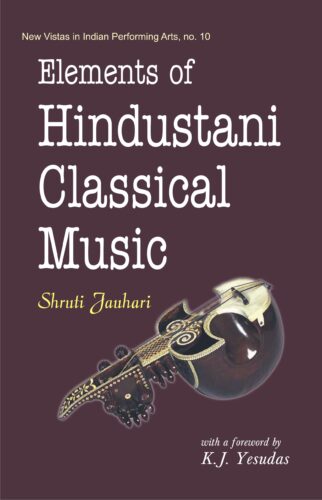
The book describes the history and evolution of Hindustani classical music, and terms and processes related with its performance. The musical instruments used in vocal singing, rags frequently presented in classical musical concerts, and famous gharana musicians have also been discussed. Very useful for the beginners of Hindustani Music.
Hindustani classical music, a jewel in the crown of the Indian musical tradition, has become increasingly popular in South India and abroad over the last few decades. This book attempts to present a detailed and comprehensive discussion of the fundamental concepts and aspects of Hindustani classical music. It begins with an account of the history and evolution of Hindustani classical music by taking up developments in a chronological order. It explains a number of terms and processes involved in the performance of Hindustani classical vocal music. In an interesting discussion, it mentions the various famous gharanas of the genre and deals with the life-histories of some of their eminent musicologists and singers. The musical instruments which are used in accompaniment to the vocal singing in Hindustani music are described. It also details the rags which are frequently presented in contemporary musical concerts, highlighting the important features of each.
The book will be useful to all those who wish to learn and acquire knowledge of Hindustani classical music. It will be of interest to all practitioners of Hindustani classical music.

The book describes the history and evolution of Hindustani classical music, and terms and processes related with its performance. The musical instruments used in vocal singing, rags frequently presented in classical musical concerts, and famous gharana musicians have also been discussed. Very useful for the beginners of Hindustani Music.
Hindustani classical music, a jewel in the crown of the Indian musical tradition, has become increasingly popular in South India and abroad over the last few decades. This book attempts to present a detailed and comprehensive discussion of the fundamental concepts and aspects of Hindustani classical music. It begins with an account of the history and evolution of Hindustani classical music by taking up developments in a chronological order. It explains a number of terms and processes involved in the performance of Hindustani classical vocal music. In an interesting discussion, it mentions the various famous gharanas of the genre and deals with the life-histories of some of their eminent musicologists and singers. The musical instruments which are used in accompaniment to the vocal singing in Hindustani music are described. It also details the rags which are frequently presented in contemporary musical concerts, highlighting the important features of each.
The book will be useful to all those who wish to learn and acquire knowledge of Hindustani classical music. It will be of interest to all practitioners of Hindustani classical music.
| There are no products |